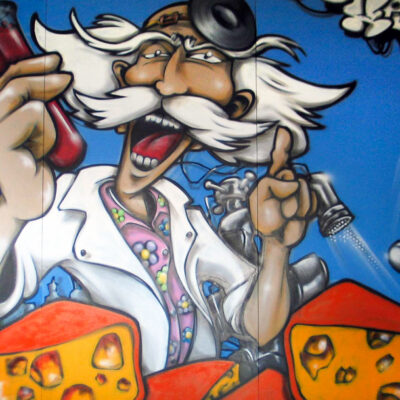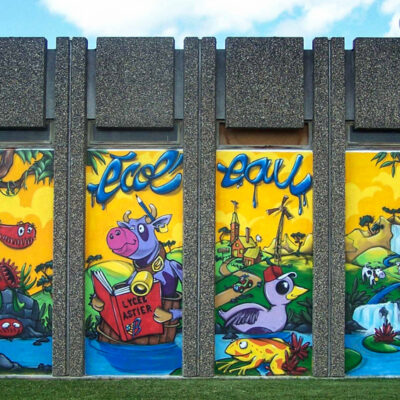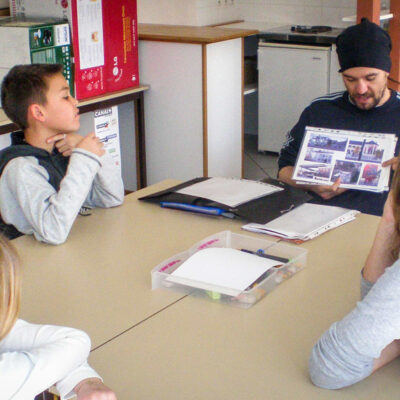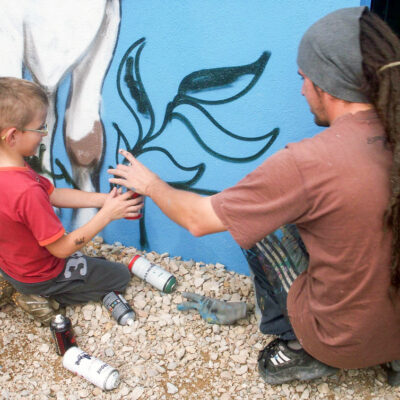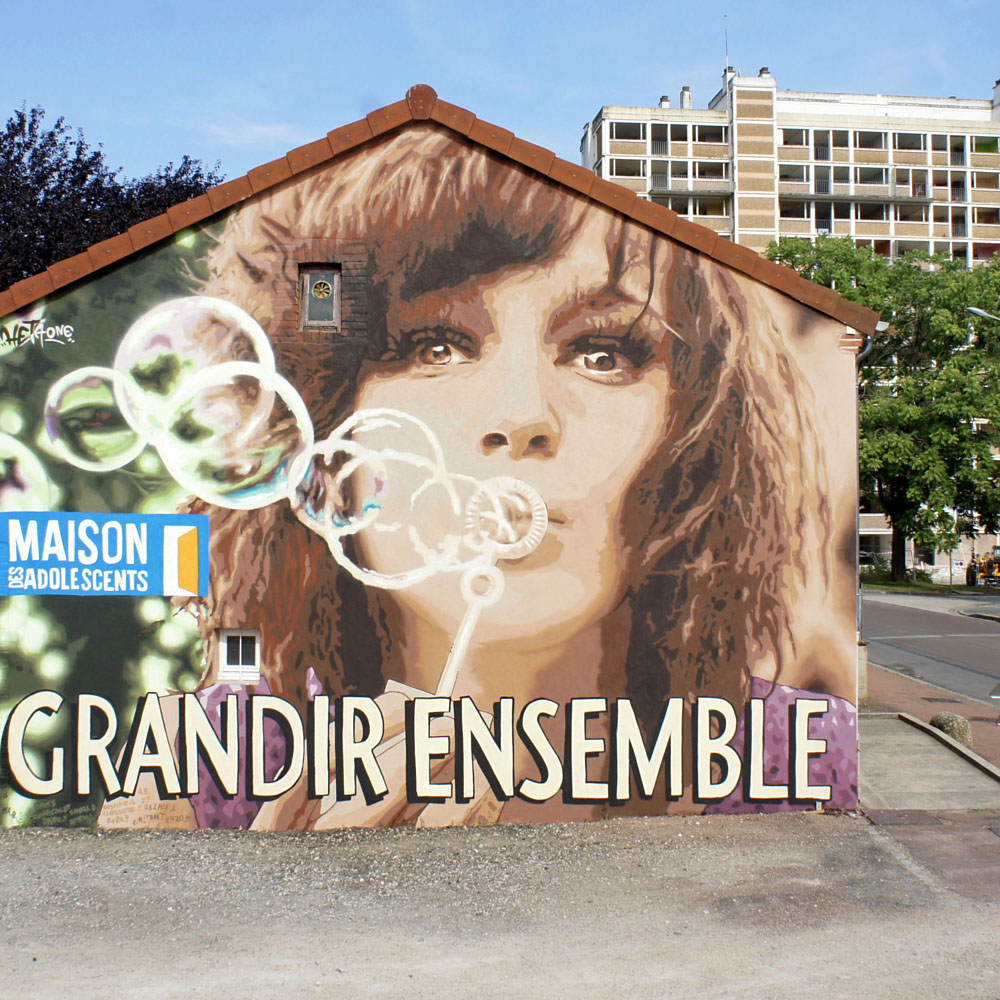Services ordered by local authorities, associations or companies.
They allow participants to express themselves through creativity and to understand graffiti culture.
Heta is accredited by the French National Education.
Click on the thumbnails to enlarge
Working in both neighbourhood houses and rural homes, in schools, in different IME (medical-educational institutes) and CAT (work support centres)…
Heta is involved in an educational approach to knowledge transmission.
Click on the thumbnails to enlarge
Learning to draw and paint is an adventure to share.
It is the possibility of expressing oneself freely, stimulating creativity.
To create a fresco is to develop the notion of group. It also requires discipline and attendance to acquire complex techniques.
Click on the thumbnails to enlarge
Opportunities to :
- Workshops for beginners, experienced…
- Public production, associated with an event…
- Collage, t-shirt, stencil, light graff…
- Intergenerational workshops…
Workshop video :
Workshop video :
Teaching methods and procedures
The internship is a progressive approach :
The context :
- The history of hip-hop and graffiti, urban cultures.
- Different styles (flop, block, bubble, wild style …) Thanks to magazines, books.
- The law: graffiti and the law (in what context can we practice it, opening a dialogue on citizenship).
The drawing :
- The bases (sketches, perspectives, colours, construction, etc.)
- The lettering.
- The character.
- The setting.
The model of the fresco :
- Choice of theme, style, colors…
- Search for patterns.
- Sharing of ideas.
The spray can :
- Discovery of the handling of the spray can.
- To trace, to draw, to write.
- Advanced techniques, overlapping, degraded…
The realization of the fresco :
- Sketch.
- Fill, shadow and light.
- Finish.
Click on the thumbnails to enlarge
Necessary resources
For the initiation and realization of the model :
- Room with chairs, tables, paper (one A4 ramette), pencils (depending on the number of participants).
- Internet access, and a printer, for searching and printing images.
- If possible a USB drive.
For the realization of the fresco :
- If the fresco is to be made indoor, sufficient ventilation or rental of a smoke extractor.
- The ideal is the courtyard type, airy and protected.
- In advance, protection of the place of the paint splashes. If necessary tarpaulins on the floor, wall, ceiling, furniture…
- Sufficient light.
- If necessary, ladder, ladder or scaffold (check standards for miners).
- For participants, adequate clothing, protective masks…
Support :
- If it’s a wall: cleaning, primer, color underlayment…
- If removable support: construction of an armature
- Plywood board. The thickness must be sufficient (+1 cm). If there is no reinforcement, the boards must be properly assembled and not hinged…”
- 4 planks minimum (standard size 2.5m high and 1.25m wide)
- In both cases previously under-lay with color paint to be defined (Referenced to RAL if possible), provide an additional pot for retouching.
Duration :
- Define the number of days or half days required.
- Allow about 5 days for an average surface realization (10m x 2,5m) and for groups of 4/6 young that turn in 1 hour modules.
Theme :
- The theme of the fresco can be defined in advance or free.
- Participants search the Internet for images corresponding to the themes and, as in a kitchen recipe, these ingredients are mixed, combined, to create a collective fresco.
Participants :
Age of the participants: Major or minor, but for those under 9/10 years, specific workshops with felt and brushes.
Number of participants: The total number of participants is not limited, but during the practice of the bomb, it is groups of 4/6 participants who rotate by modules…
Materials :
The artist provides the necessary for the realization of the work (with the exception of the medium and its preparation):
- Aerosol cans
- Caps, tips, books and magazines for initiation…
Remains at the expense of the structure :
The support, its preparation, protections, paper and pencils for initiation.







